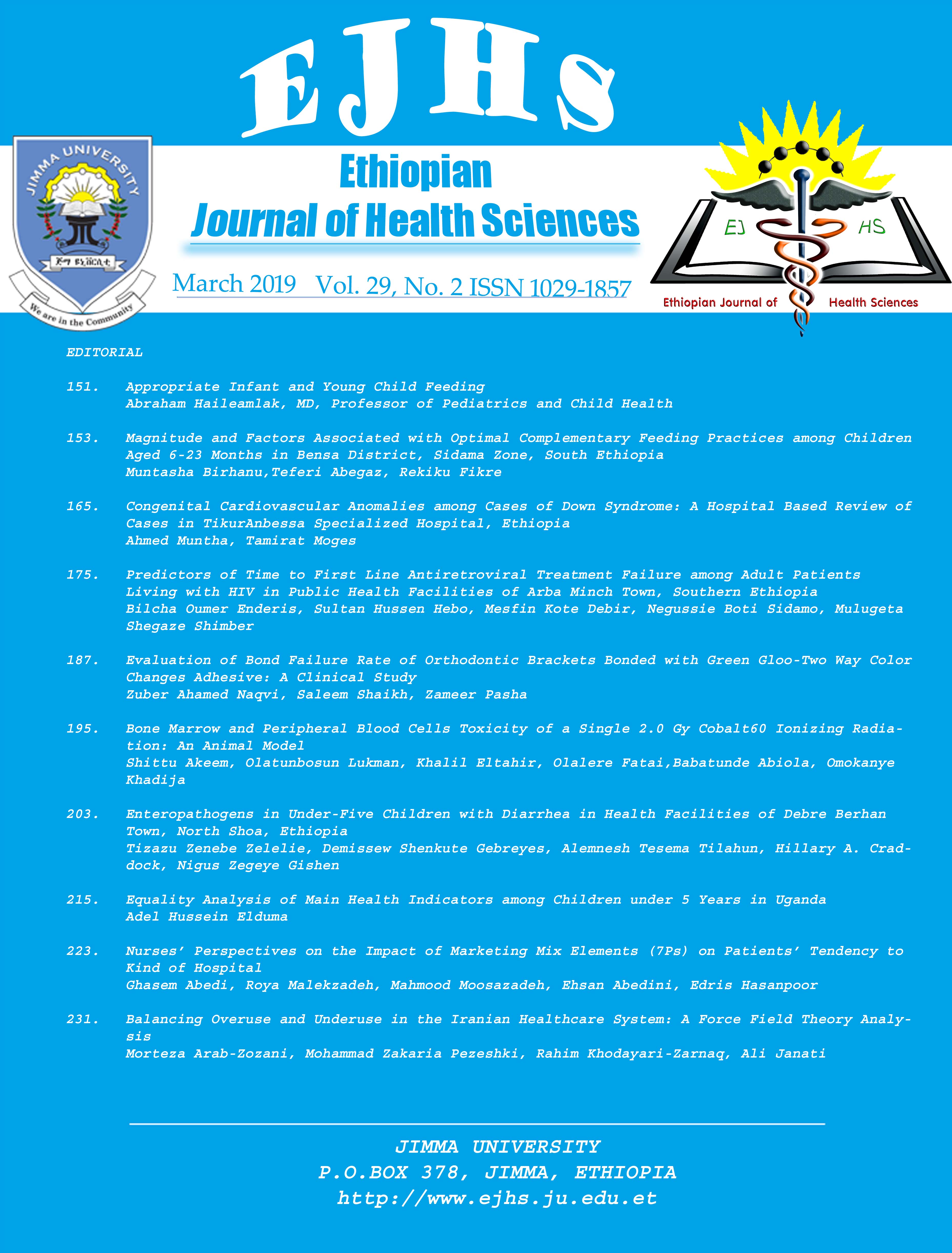BACTERIAL PROFILE AND ANTIMICROBIAL SUSCEPTIBILITY PATTERN OF ISOLATES AMONG BURN PATIENTS AT YEKATIT 12 HOSPITAL BURN CENTER, ADDIS ABABA, ETHIOPIA
Main Article Content
Abstract
BACKGROUND: Infection is a common cause of morbidity and mortality in burn patients. Clinicaldiagnosis of bacteremia and/or sepsis in burn patients is difficult for a number of reasons. It could besymptomatic and/or asymptomatic as a result of immune deficiency secondary to thermal injury.METHODS: A cross sectional study was conducted at Yekatit 12 Hospital Burn Center. Blood specimenand wound swab were collected from burn patients and were cultured by conventional method.Sensitivity/susceptibility pattern of the isolates was determined by disc diffusion method. Some of the riskfactors of bacteremia like prior antibiotic use and total body surface area burn were also determined.RESULTS: Fifty patients were enrolled in the study of whom 21(42%) were found bacteremic. Fivedifferent bacteria were isolated from blood specimen. Coagulase negative Staphylococci, 9(42.8%), S.aureus, 8(38.2%), Bacillus spps, 2(9.52%), K. pneumoniae, 1(4.8%), and P. aeruginosa, 1(4.8%), werefrequent isolates. From wound swab, S. aureus, (34.04%), and P. aeruginosa, (31.8%), werepredominant. Antimicrobial resistance was observed for Ampicillin, (77.4%), Doxycycline, (74.0),Nalidixic acid, (70.5%), Penicillin G, (68.2%), and tetracycline, (67.5%). Total body surface area of burn≥ 15% was found as a risk factor for bacteremia.CONCLUSION: Bacteremia was detected at a rate of 42% among burn patients. Frequent isolates wereS. aureus, (34.04%), and P. aeruginosa, (31.8%). About 82.16% of the isolates showed multipleresistances. In light of our findings, regular antibiotic resistance test has to be done for each patient inorder to select an appropriate antimicrobial agent.

